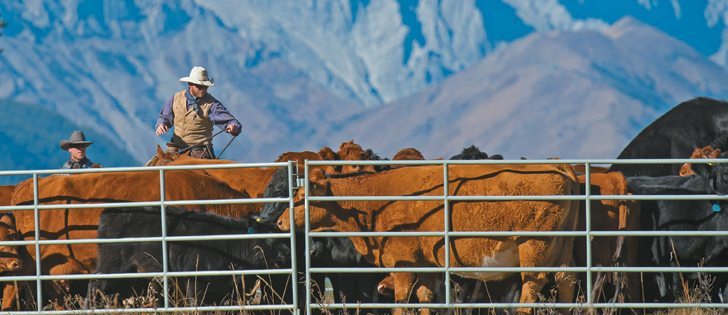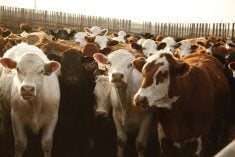Revenues and expenses must be tallied to determine cost per wintered cow in order to find areas for improvement
EDMONTON — Poor prices for all classes of cattle for almost a decade dogged producers who still had to cover inflating costs.
“We hobbled along, but unfortunately costs did not hobble along. They continued to increase year over year,” said Kathy Larson, re-search economist with the Western Beef Development Centre.
Calf prices have more than doubled in the last two years and profits have been impressive, but knowing the cost of production remains critical to make the best decisions, she said at the Livestock Gentec annual conference held in Edmonton Oct. 13-14.
Read Also

Growth plates are instrumental in shaping a horse’s life
Young horse training plans and workloads must match their skeletal development. Failing to plan around growth plates can create lifelong physical problems.
“Even in good years there will be producers losing money and bad years some producers making money,” she said.
The development centre has worked with producers since the 1990s to collect data to estimate what it cost on average to produce a pound of calf.
New online tools and training have been available since 2013 that allow producers to calculate their unique costs. Alberta Agriculture also provides a system called CowProfit$.
Cow-calf cost of production is typically reported as dollars per cow wintered. These costs are then divided by the total pounds of calf weaned to arrive at the unit cost of production, or break even price on calves. The unit cost of production can be compared with posted market prices.
It is a good idea when doing a whole ranch analysis to divide the operation into business enterprises such as the cow-calf operation, hay and grazing land section, heifer retention and development program, backgrounding and finishing cattle sectors. Each needs to be examined on its own merit.
“It involves going through revenues and expenses that accrue for each enterprise and figure out what your cost structure is for each,” she said.
Cash versus non-cash transactions also need to be included when figuring out the ranch’s financial status.
Cash is the physical sale of cattle and the physical purchase of feed, in which actual money is ex-changed and products move on or off the operation.
Non-cash-transactions could be the movement of cattle and feed where no money is exchanged.
A point of contention among producers is calculating the cost of their labour because so many undervalue their wages.
The average wage per hour for primary labour in Alberta is $29, based on a 40 hour week or 2,080 hours per year.
“Could the ranch provide $58,000 in unpaid labour, because that might be what you might have to pay someone to do your job,” she said.
Studies from other institutions have calculated the value of the rancher’s labour from $25,380 to $70,000 a year.
Economic studies have found tremendous differences between ranches. There could be as much as $200 difference in cost to maintain a cow between low cost and high cost producers.
A 2010 Alberta Agriculture study found the average cost per cow was $636. The top producers with the lowest cost of production reckoned it cost them $545 to keep a cow over winter.
“After BSE, producers did everything in their power to try and whittle down their costs but not to the point where you want to hamper the quality of your product,” she said.
Profitability is tied to production, and low cost producers manage their herds to be efficient with controlled costs and still grow more pounds of beef per calf weaned than the average.
If producers figure it costs $650 to winter a cow that produces a 550 pound weaned calf, those calves need to sell for $1.18 a pound to break even.
However, there are fewer to sell if some die and break-evens are higher. For example, the calf must sell for $1.39 per lb. if there is a 90 percent weaning rate.
A cost of production survey from Kansas State University found similar results.
“There is a $250 per cow difference in the top producers and bottom producers,” Larson said.
Most of the differences were based on the way producers controlled feed costs while raising heavier calves and monitoring the markets to get the best prices of the season.
Low cost producers tend to have lower feed costs, larger herds, lower machinery and building investments, a higher weaning percentage and lower interest on debt.
They do not cut corners on pastures, herd health or bulls because all those factors affect herd productivity.
Studies also found that large herds tend to fare better because they can spread out fixed costs such as property taxes, veterinary care, fuel, repairs, utilities, depreciation and labour.
Herd size is correlated with lower costs, but smaller operations can be just as efficient.
“Size helps spread out fixed costs, but if you already have an unprofitable situation, I would not advise adding 50 cows and your problems will be solved,” she said.
The recent western cow calf survey found that improvements are possible to reduce costs. About 400 producers responded to the survey, which was released earlier this year.
For example, the survey found that the average breeding season is 92 days when 63 days is recommended to ensure calves are born within a short period of time so they will be more consistent in size.
Producers reported that 55 percent of their calves were born in the first 21 days of the calving season. They should try for 60 percent of calves arriving in that three week period.
The average cow-bull ratio was 24:1 with seven percent failing to become pregnant. Calf death losses were reported at seven percent.
The average weaning weight was 535 lb.
For more information on cost of production calculators, visit www.wbdc.sk.ca.
















